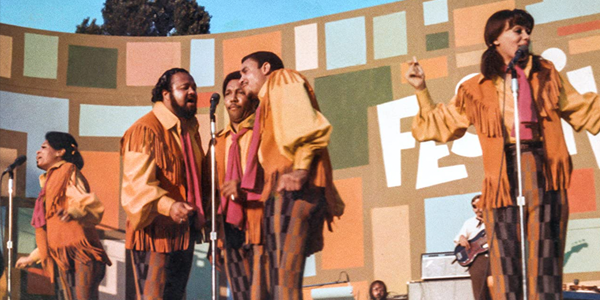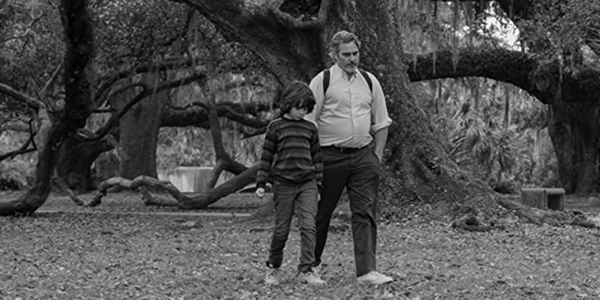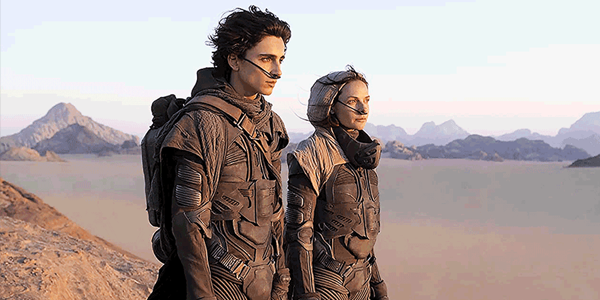recent reviews
Sign up for our monthly newsletter
to stay up to date on Cineluxe
This unique documentary uses animation creatively to both tell the story and protect the identity of its subject
by Dennis Burger
February 17, 2022
You can’t help but get the sense filmmaker Jonas Poher Rasmussen began work on Flee with no firm idea of where it was going or even what it was about at anything other than the 30,000-foot level. That may seem an odd statement to make about an animated film, given how meticulously most of those are pre-engineered. But Flee, as it happens, wasn’t animated for aesthetic reasons—it was animated to protect the identity of its subject, Amin, for reasons that become clearer and clearer as the story unfolds.
Amin is an Afghani refugee who fled to Denmark during the Afghan Civil War that followed the Soviet–Afghan War of 1979-1989. The exact circumstances of his circuitous journey were a closely guarded secret for many years—even from his closest friends—and when he finally started to open up about his past, Rasmussen recorded the conversations, sometimes on his phone, sometimes with professional equipment, but always in fits and starts.
I hesitate to say much more than that since Flee is largely about self-discovery and the nature of suppressed memories and unspoken truths. And the twists and turns Amin takes in not only unpacking but accepting his past add up to an incredibly compelling human drama that needs to be experienced in real-time, as unspoiled as possible.
Make no mistake, though—it can be a frustrating journey, worthwhile as it is in the end. The animation occasionally acts as a barrier between the viewer and the subject, and although the insertion of unanimated and unaltered newsreel footage serves as a consistent reminder that these were real events that happened to real human beings, there are times when the umbilical between the cartoonish imagery and the reality lying beneath it is stretched almost to the point of snapping.
It’s easy to make criticisms of that sort. It’s not so easy to think of another way this project could have come to fruition. So don’t take any of the above as a reason to skip Flee. Just know that you’ll occasionally need to do some work here. This isn’t a passive viewing experience; nor is it entertainment. It’s a shocking look at geopolitical and societal forces of the sort most of us have never been subjected to, filtered through the lens of one man’s memories and experiences, then filtered through yet another lens of two-dimensional artwork.
Thankfully, given the attention the film is getting due to its various Oscar nods for Animated Feature, Documentary Feature, and International Feature Film, Flee isn’t hard to find. It’s available to Hulu subscribers with both its original soundtrack (a mix of several languages but primarily Danish and Dari, with a good bit of Russian and English sprinkled in) or in an English dub. I instead rented it from iTunes and viewed it via the Apple TV+ app on Roku, as I find that’s often a safer bet in terms of image quality.
Doing a quick spot-check between various scenes in the Hulu and Apple presentations, though, I honestly found only one meaningful difference, in a live-action establishing shot of New York City. Apple-by-way-of-Roku renders this brief shot with a little less aliasing and a bit more detail. Aside from that, they’re practically identical.
By that I mean that both look quite good, given the material they’re working with. Flee does benefit from artful character design and very nice background animation but it’s not super-detailed nor is its color palette nuanced. As such, the HD/SDR presentation available on most streaming retailers is more than up to the task. I know we’re not quite to the point where high-def looks consistently great at streaming bitrates—certainly nowhere near as great as UHD/HDR—but Flee is aided by the fact that there isn’t quite as much to compress here as would normally be the case with animated features.
The picture is often animated on the fours or sixes, and at times as low as one or two frames per second. It’s also largely devoid of texture for long stretches. So aside from that aforementioned shot of NYC, there isn’t much that would trip up any reasonably modern video codec. But if you’re overly concerned with any of the above, you’re missing the point. The animation is employed as a tool, not a treat. The question is: Does it get the job done? And the answer is: Yes, undeniably.
The film’s 5.1 sound mix is utterly fascinating. Again, keep in mind that some of the audio was sourced from smartphone footage shot from the back of a moving car and some of it was from spur-of-the-moment recordings done in hotel rooms and bedrooms. In a weird way, this results in the audio being the strongest anchor to reality throughout the film. There’s also a lot of creative mixing, and the shape of the soundfield is frequently used to mark the transition between the present and the past, between the reality of the conversation between Jonas and Amin to the memories of the latter—sometimes crystal clear, sometimes hazy and nebulous.
Weirdly enough, the 5.1 sound also upmixes beautifully into Atmos, a fact I stumbled upon purely because I forgot to turn off my system’s Atmos processing before pressing Play. There’s one scene—a recreation of Amin’s memories of being smuggled out of Russia in the belly of a rickety boat—that’s so sonically immersive it’s hard to believe it wasn’t mixed in Atmos proper.
Again, though, to focus on such issues is to put the cart before the horse. Amin’s is a story that needed to be told, and it’s one you need to hear. It’s a story about acceptance, dealing with trauma, and self-sabotage and the nature of memory. In short, despite all the artifice, it’s a film rooted in the messiness of life and the juxtaposition between the forces of history and the individual human spirit. And all of that makes it very much worth your time.
Dennis Burger is an avid Star Wars scholar, Tolkien fanatic, and Corvette enthusiast who somehow also manages to find time for technological passions including high-end audio, home automation, and video gaming. He lives in the armpit of Alabama with his wife Bethany and their four-legged child Bruno, a 75-pound American Staffordshire Terrier who thinks he’s a Pomeranian.
PICTURE | Aside from one brief live-action shot, there’s no meaningful difference between the film’s HD presentation on Hulu and AppleTV+
SOUND | The 5.1 mix is deployed creatively, providing the strongest anchor to reality throughout the film, and upmixes to Atmos surprisingly well
© 2023 Cineluxe LLC






